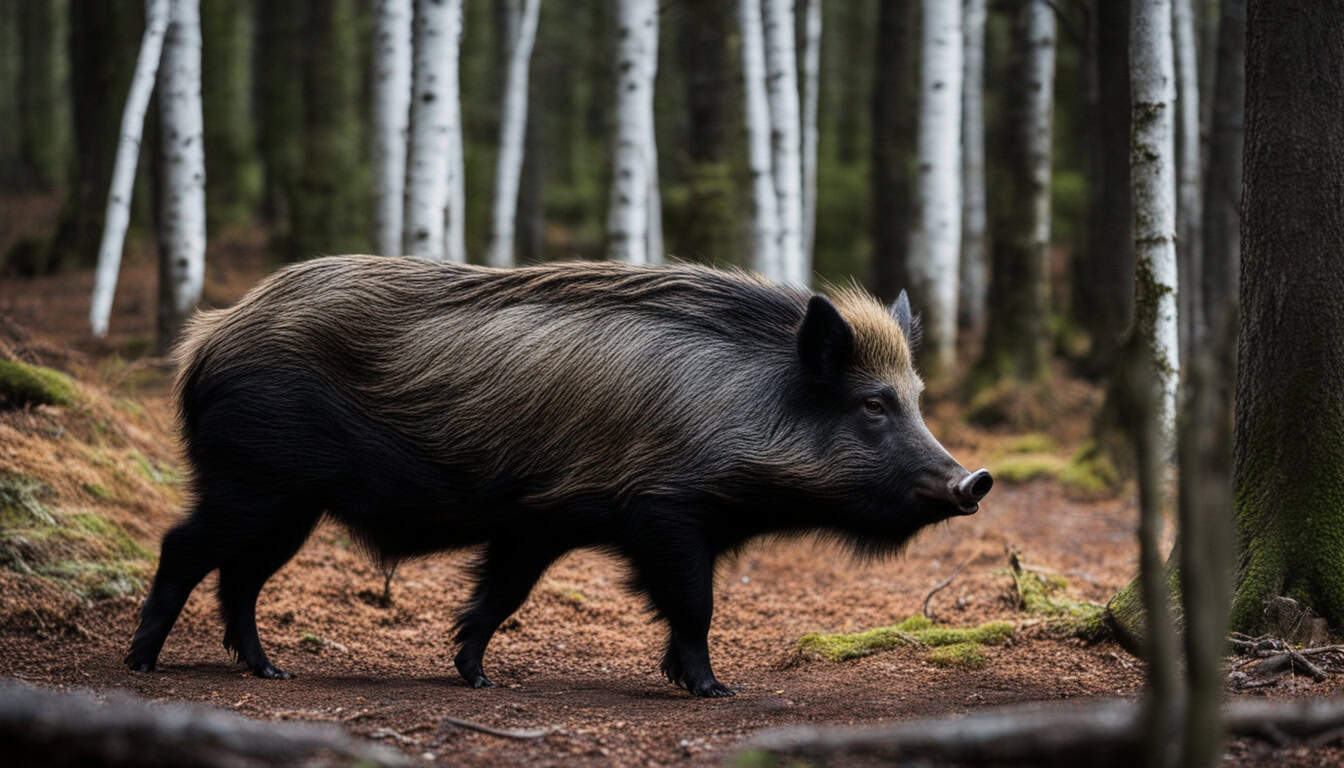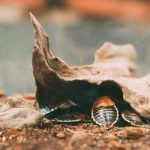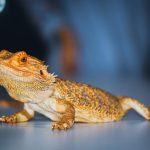Have you ever thought about if wild boars live in the United States? Surprisingly, they do. It’s becoming a bigger issue. These tough animals are able to survive in all kinds of weather.
There are over 6 million of them now, and their numbers are growing. They got here mainly because of people and because they have no natural enemies. They are affecting both nature and farming.
Learn more about the spread of these unwanted animals. Know the problems they’re causing as they increase in number in the USA.
Introduction to Wild Boars in the USA
Wild boars have a captivating history in the United States. European settlers brought them over several centuries ago. The process was not simple; it had many different parts and reasons.
History of Wild Boars in America
In the 1500s, Spanish explorers introduced wild boars as a food source. Since then, escaped domestic pigs and imported European boars for hunting have created today’s wild populations.
Boars were also introduced on purpose to increase hunting opportunities. All these factors have made these boars an established part of America’s wildlife.
Current Population Trends
Wild boars’ numbers have grown rapidly in the last few decades. They can now be found in over 35 states. Their quick spread is due to their ability to have many offspring, a lack of natural enemies, and their adaptability.
This growth is causing significant problems for the environment and economy. Manging these boars effectively has become very important.
Wild Boar Habitats in the United States
Wild boars in the United States are very adaptable. They live in different places and do well. This includes forests, wetlands, and even areas where crops grow.
They prefer living in forests. Forests provide them with plenty of places to hide and food. Wetlands are also good because they have a lot of different plants and water. Even farm areas, while not the best for them, are invaded by these smart animals. This causes trouble for farmers.
Looking at the feral hog habitat range in the USA, we see they can live in many climates. They are found in both very hot and cold places. This shows how tough they are. They have grown in numbers and spread to many regions in the U.S.
Their ability to find food is key to their survival. They eat everything from plants in woods to farm crops. Their skill in using different environments shows how adaptable they are. It also points out the great variety of food found in wetlands, helping them live and grow.
Distribution and Range Expansion of Wild Boars
Wild boars are spreading across the USA, now seen in 35 states. They’re very good at adapting and have no real enemies here. This has helped them grow their numbers and move into new areas.
Geographic Spread
Once brought over by settlers, wild boars are now all over the country. They’re from the southeast to far in the northwest. Their ability to live in many places has really helped them spread out.
Factors Contributing to Range Expansion
Several things have helped wild boars get more space to live. They’re great at living in different places and climates. People moving them around, whether on purpose or not, has also made them spread. The fact that no natural predators can stop them from growing their population in new spots is a big deal too.
Are there wild boars in the USA?
Yes, wild boars are in the United States, spread widely and growing in numbers. This spread has caused issues for the environment and the economy.
The feral hog presence in America is a big deal and is spreading fast. They can already be found in 35 states and are still moving into new areas.
Wild boar sightings in the USA are common now. Places like Texas, Florida, and California have a lot of them. This makes managing their population a big challenge.
Their numbers are stressing local ecosystems. Because there are not many predators, they are free to destroy crops and disrupt natural areas. They also compete with local animals for resources.
Impacts of Feral Hogs on Native Ecosystems
Invasive feral hogs make a big impact on native ecosystems. They change the land a lot, hurting crops and natural areas.
Damage to Crops and Forests
Wild boars cause big problems in farms and forests. They dig up plants and hurt roots, lowering crop yields. This leads to big money losses for farmers. Their digging also messes up forest soils, affecting plant diversity.
Competition with Native Species
Wild pigs not only harm farms, they also fight with local animals for food and homes. This can push local animals out, changing nature’s balance. Plus, feral hogs can carry diseases, which is bad for other animals, farm animals, and people.
| Impacts | Details |
|---|---|
| Damage to Crops | Feral hogs uproot and consume crops, leading to significant financial losses for farmers. |
| Forest Disruption | Rooting and foraging by wild boars disrupt soil and plant life, affecting biodiversity. |
| Resource Competition | Wild boars outcompete native species for food and habitat, leading to ecological imbalances. |
| Disease Spread | Feral hogs can spread diseases to wildlife, livestock, and humans, posing public health risks. |
Challenges in Managing Wild Boar Populations
Handling invasive pig species is hard. They have many babies and can live anywhere. This makes it tough to control them across big areas.
Reproductive Rates and Adaptability
Invasive pigs reproduce quickly and adapt well to all kinds of weather. A mother pig can have many babies in a year. This fast breeding means their numbers grow rapidly.
These pigs don’t just survive; they thrive in many different places. Like the dry lands of Texas or the swamps of Florida. Their ability to live in various climates makes them hard to control.
Lack of Natural Predators
In the U.S., wild pigs have no natural enemies. This lack of predators lets them spread to new areas easily. Without something to keep their numbers in check, they can take over. Common wildlife control methods don’t always work. So, new, creative ways to control them are needed.
| Challenges | Impact | Considerations |
|---|---|---|
| Reproductive Rates | Rapid population growth | High fecundity and multiple litters per year |
| Adaptability | Thriving in diverse climates | Ability to adjust and survive in varied environments |
| Lack of Predators | Uncontrolled population expansion | Absence of natural checks and predators |
Economic Consequences of Wild Pig Invasions
Wild pigs are causing big money losses in the U.S. This happens mainly in farming, with crops like corn, wheat, and soybeans hit hard. Let’s dive into the costs to truly understand the impact of these invaders.
Cost of Crop Damages
Wild pigs love to eat crops, costing farmers millions each year. They destroy fields, plants, and feed on corn, wheat, and soybeans. Their actions lead to huge setbacks for farmers.
Effects on Livestock and Property
Wild pigs don’t stop at crops. They can infect domestic animals with diseases and parasites. This means big money in vet bills and sometimes the loss of whole herds.
They also wreck fences, water supplies, and farm structures. Fixing these damages adds to the costs and trouble they cause, affecting whole communities.
| Cost Component | Estimated Annual Losses (USD) |
|---|---|
| Crop Damages | $1.5 Billion |
| Livestock Health | $800 Million |
| Property Damages | $600 Million |
| Total Economic Impact | $2.9 Billion |
Hog Hunting Locations in the USA
Looking for wild boar hunting spots in the USA is like going on an adventure. You’ll find great places in the South’s thick forests and the West’s wide open spaces. Many states are perfect for hog hunting. They offer lots of opportunities and help control the wild hog numbers.
| State | Top Locations | Season |
|---|---|---|
| Texas | Hill Country, Piney Woods, South Texas Brush Country | Year-round |
| Florida | Osceola National Forest, Green Swamp Wilderness Preserve | Year-round |
| California | Central Coast, Tejon Ranch, Carrizo Plain | Year-round |
Texas is a top place for pig hunting in the country. It has many terrains, catering to all kinds of hunters. You can find wild boar all year on its vast lands. Florida is great too, with its wetlands and forests making it perfect for hunting. It’s not just fun but also helps keep the wild hog numbers in check.
California stands out as well, offering some amazing hunting experiences. The Central Coast and Tejon Ranch are famous for their wild pigs. They offer great adventures and help with keeping the hog population in control.
No matter if you’re a seasoned hunter or just starting, the best hog hunting spots are all over the USA. The mix of different landscapes and hunting seasons make these spots ideal for managing wild boar.
Wild Boar Sightings and Human Interactions
Wild boars are appearing more in cities and the countryside. This causes an increase in interactions with people. Understanding how these encounters happen is key for keeping communities safe and managing wildlife.
Urban and Rural Encounters
Wild boars are adaptable and can be found in many places. In the countryside, they often destroy farms and properties. In cities, they can cause damage and pose risks to people.
Safety and Prevention Tips
Staying safe around wild boars starts with being aware and taking the right actions. Here are some key safety tips for when you see a wild hog:
- Maintain Distance: Always stay far away from wild boars to keep them calm.
- Secure Food Sources: Make sure there’s no food that could attract them to your area.
- Report Sightings: Tell local wildlife authorities about any wild boar you see so they can respond.
- Use Fencing: Good fences keep wild boars away from homes and gardens.
By being careful around wild boars, we protect our communities and help manage wildlife effectively. These safety steps are important for living safely with these animals.
Invasive Species Control Measures
Controling the growing number of wild boars in the United States needs many different efforts. This includes both big government programs and small community actions. These range from official projects to independent local groups working together. It’s a team effort by many to fight this invasive species.
Government Programs
The government takes a lead in dealing with the wild boar issue. It has set up special teams to get rid of feral swine. These teams use various methods, like traps, guns, and sometimes, they use professional hunters. Governemnt groups, such as the United States Department of Agriculture (USDA), have also come up with big plans to fight this problem. They include educating the public, studying the boars’ habits, and finding ways to stop them from spreading.
Community Involvement and Awareness
On top of the government’s work, locals are being asked to help. They should report any wild boar they see and take steps to stop their advance. This can involve joining planned hunts or learning how to stop boars from wrecking their land. Trying to teach everyone about the threat of boars and the need to work together is also key. This joint effort by locals, farmers, and animal experts is the heart of making the fight against wild boars work.
- Promote public awareness through campaigns and community meetings.
- Encourage residents to report sightings and damages caused by wild boars.
- Implement coordinated trapping and hunting efforts.
- Conduct regular community workshops for best practices in boar management.
| Control Measure | Initiating Body | Outcome |
|---|---|---|
| Trapping Programs | USDA | Reduced local populations |
| Community Reporting Systems | Local Authorities | Increased awareness and participation |
| Public Education Campaigns | Non-Governmental Organizations | Improved preventive measures |
| Professional Hunting Initiatives | State Wildlife Agencies | Controlled population growth |
Diverse Names for Wild Boars and Their Impacts
Wild boars go by many names, sparking curiosity worldwide. Known scientifically as Sus scrofa, they are often called wild hogs, feral pigs, and razorbacks. Each name brings a different image and history, shaping how we view these creatures.
Common Names and Scientific Classification
The scientifically correct term is Sus scrofa, used in serious discussions. But in daily talk, we hear them being called wild hogs, feral pigs, and razorbacks. This shift in names can be confusing. Yet, it mirrors their diverse habitats and encounters. Knowing these terms is key for researchers and managers alike.
Public Perception and Media Coverage
The media’s view greatly impacts how we see wild boars. Stories often focus on their harm to farms and nature, whether labeled feral hogs or wild boars. Words like ‘razorbacks’ make them sound wild and tough. In contrast, ‘feral pig’ highlights their threat as invasive species.
| Common Name | Scientific Name | Public Perception |
|---|---|---|
| Wild Hog | Sus scrofa | Neutral/Adaptable |
| Feral Pig | Sus scrofa | Negative/Invasive |
| Razorback | Sus scrofa | Wild/Rugged |
Ecological Roles and Potential Benefits
Wild boars are often seen as invaders, but they do have a positive ecological role. A key benefit of feral pigs is helping to increase plant diversity. They do this by turning up the soil, which helps certain plant seeds to grow. This increases the number of different plants in an area.

Also, the wild pig impact on biodiversity isn’t all bad. Their digging makes new homes for other animals. This helps smaller animals, birds, and insects that like living in places with loose soil. Their work also helps to keep the soil healthy by moving nutrients around.
| Aspect | Positive Ecological Roles |
|---|---|
| Soil Disturbance | Promotes plant biodiversity by aiding seed germination |
| Habitat Creation | Generates environments for small mammals, birds, and insects |
| Nutrient Cycling | Enhances soil health through their rooting behavior |
It’s important to understand the good and the bad about wild boars’ effects. Negative impacts are often what we notice first. Yet, seeing their good side helps us form better plans for dealing with them. This way, we can take a more balanced approach to their management.
Future Prospects for Wild Boar Population Management
Future strategies for wild boar control must be new and lasting. Effective management must consider nature, money, and people. Using new research and tech is key, like better tracking and birth control for these animals.
Working with many groups is crucial. Landowners, governments, and green groups must team up. This teamwork mixes science and real-world skills, making plans stronger.
It’s also important to think long-term about solving the wild pig issue. This means looking for ways to live with them without harm, like changing habitats. The aim is a lasting balance that’s good for both nature and people.
FAQ
Are there wild boars in the USA?
Yes, the USA has wild boars, also called feral hogs. They number more than 6 million and are found in at least 35 states.
What is the history of wild boars in America?
Several centuries back, European settlers brought wild boars to America. They came from escaped domestic pigs and boars brought for hunting. This created invasive feral swine populations.
How have the wild boar populations changed over recent decades?
Wild boar numbers in the USA have grown a lot in recent years. They’ve moved to new areas because they are versatile and people help them move. Plus, they don’t have many natural enemies.
What types of habitats do wild boars prefer in the United States?
In the USA, wild boars like living in forests, wetlands, and farmlands. They can live in many different climates.
Which factors contribute to the range expansion of wild boars in the USA?
Several things help wild boars spread in the USA. These include their ability to live in many places, people sometimes moving them, and not many animals that eat them.
How do wild boars impact native ecosystems?
Wild boars harm native areas by harming crops and forests. They also compete with local animals, mess up living spaces, and spread diseases. This upsets the natural balance.
What challenges exist in managing wild boar populations?
Managing wild boar numbers is tough. They have a lot of babies and can live in different places. Plus, there aren’t many animals that eat them.
What are the economic consequences of wild pig invasions?
Wild pig invasions cost a lot of money. They ruin crops, hurt livestock, and damage property. This can mean losing millions of dollars every year.
Where are the best locations for hog hunting in the USA?
Places like Texas, Florida, and California offer great hog hunting. Hunters help keep the local wild boar numbers in check.
What should you do if you encounter a wild boar?
If you see a wild boar, be safe. Avoid them, keep your trash and food secure, and tell wildlife authorities. This helps reduce the danger.
What control measures are used to manage invasive wild boars?
Controlling wild boars involves government programs. These aim to reduce their numbers and damage. Local communities and more public awareness are also part of the solution.
How does public perception affect the management of wild boars?
How we think about wild boars can shape how we deal with them. The way they are named and viewed in the media can change how serious we take the problem.
Can wild boars provide any ecological benefits?
Wild boars, despite being invasive, can sometimes help plant and animal life. But, their effect on the environment is mixed and needs careful thought.
What are the future prospects for managing wild boar populations?
Handling wild boars in the future will need new and smart strategies. We must balance nature, money, and society. Research and working together will be key.







